Art & Exhibitions
A New Exhibition Reveals Leonardo’s Secret Obsession With Perfume
The show also delves into the world of Renaissance perfumery.
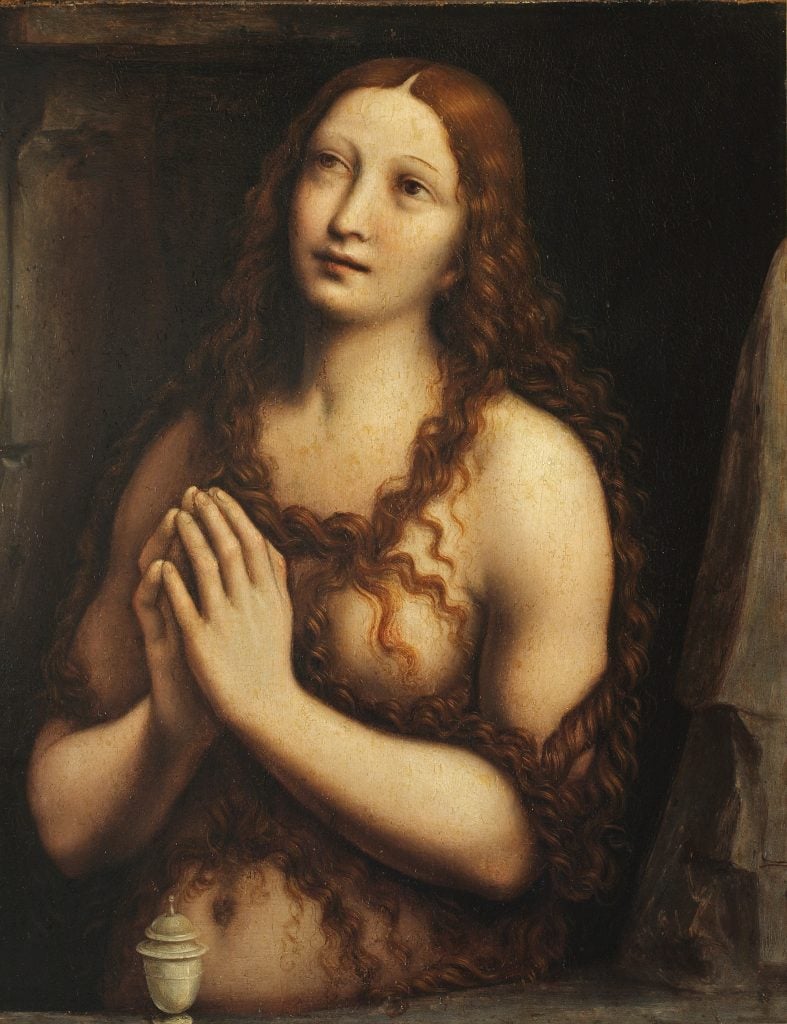
You might think you know it all when it comes to Leonardo da Vinci. He painted the Mona Lisa. As an inventor, he devised flying machines centuries before the Wright Brothers. And, in 2017, a painting attributed to him earned the highest price of any artwork at auction.
But did you know that he also extensively researched and experimented with fragrances? “Leonardo da Vinci and the Perfumes of the Renaissance,” an exhibition now open at the Château du Clos Lucé in Amboise, in central France, explores this fascinating and little-known aspect of the polymath’s work.
Leonardo came to Amboise at the invitation of Francis I, who reigned as King of France from 1515 until 1547. Having heard tales of the Italian’s varied talents, Francis named him “Premier Painter and Engineer and Architect of the King.”
In return for his services, he housed Leonardo at Clos Lucé, within walking distance of one of his own castles, the Château d’Amboise. Fatefully, it was at Clos Lucé that Leonardo wrote his will, passed his notebooks and sketches to his disciple Francesco Melzi, and passed away in 1519.
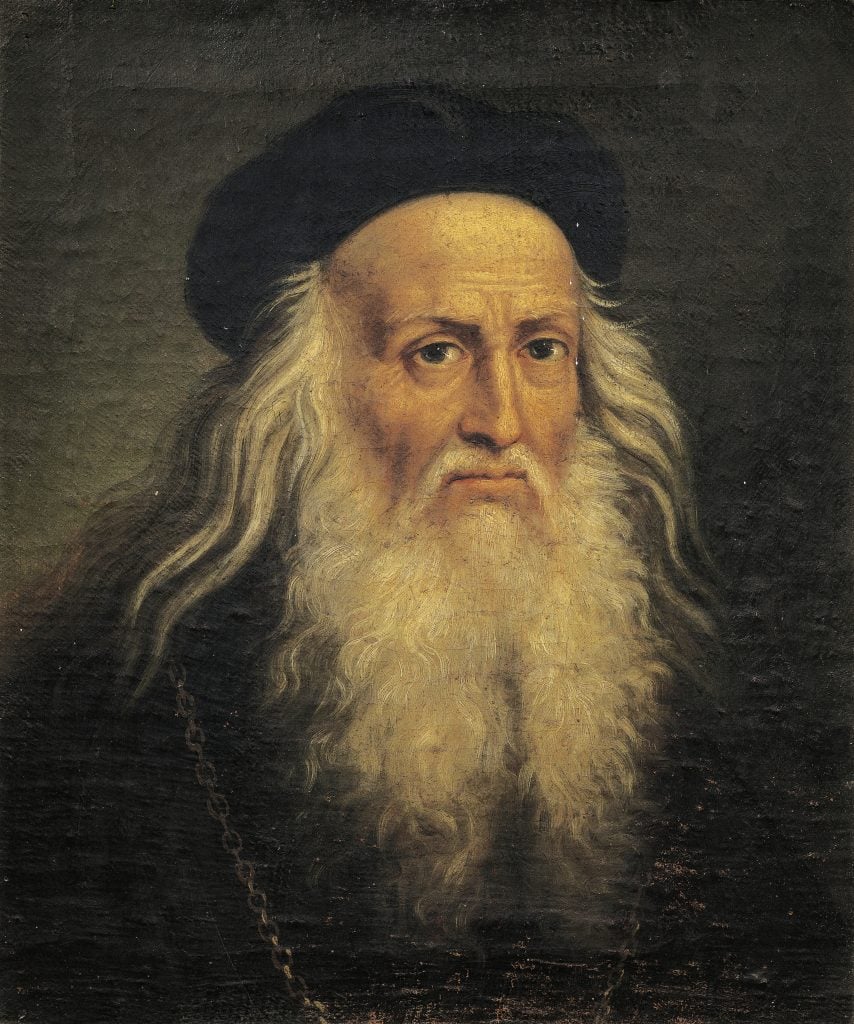
Portrait of Leonardo da Vinci, by Lattanzio Querena. Padova, Medieval And Modern Art Museum. Photo: DeAgostini/Getty Images.
Touted as a multi-sensory, olfactory experience, the exhibition shows that Leonardo got interested in perfumes after comparing the machinations of smell to those of sight and hearing.
He collected commercially available perfumes, many of them made from oils, flowers, and animal and vegetable fats, and recorded their recipes. He took notes of distillation and maceration techniques: “Remove that yellow surface which covers oranges and distill them in an alembic,” he wrote in Codex Forster, “until the distillation may be said to be perfect.”
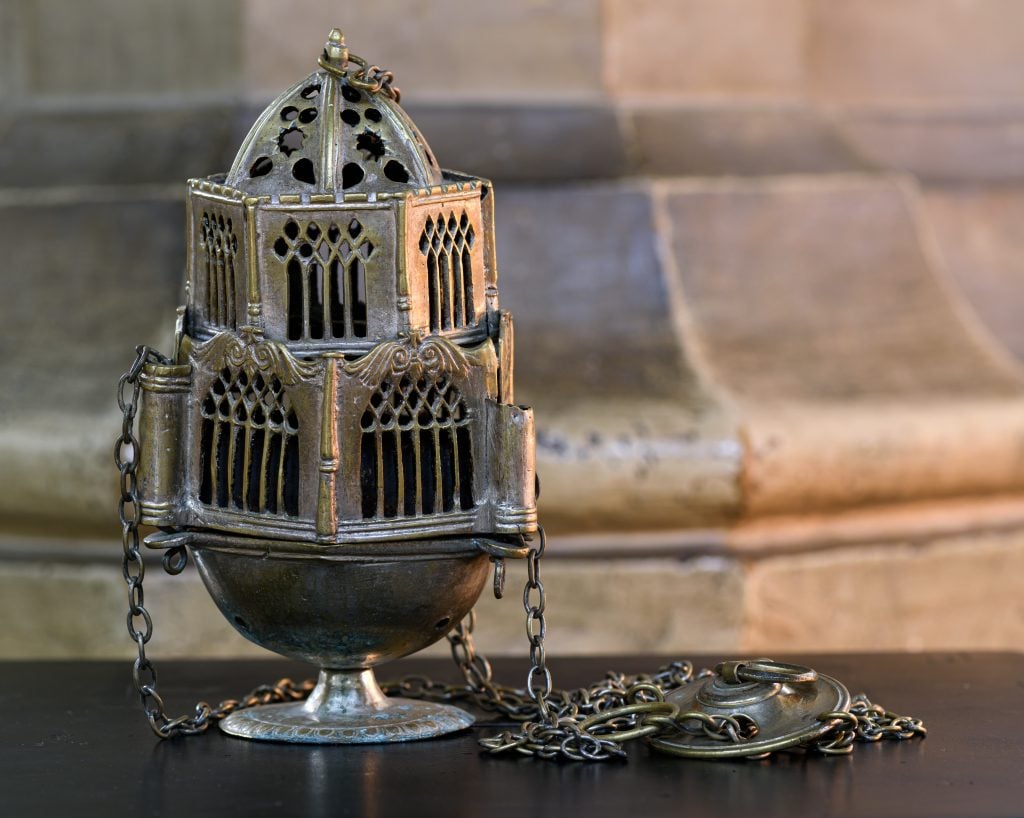
A 16th-century censer. Blois Cathedral © Léonard de Serres.
During the Renaissance, perfumes were often placed in burners not unlike those that held incense, so the perfumes doubled as air fresheners that masked the omnipresent odor of unpleasant smells; Leonardo designed some of these objects. Perfumes were also used to guard against diseases, which at the time were believed to spread through miasma or foul, contaminated air.
One of Leonardo’s designs for a burning device was modeled after a bird known as an oiselet de cyphre. The exhibition features a modern reconstruction, displayed alongside the artist’s writings.
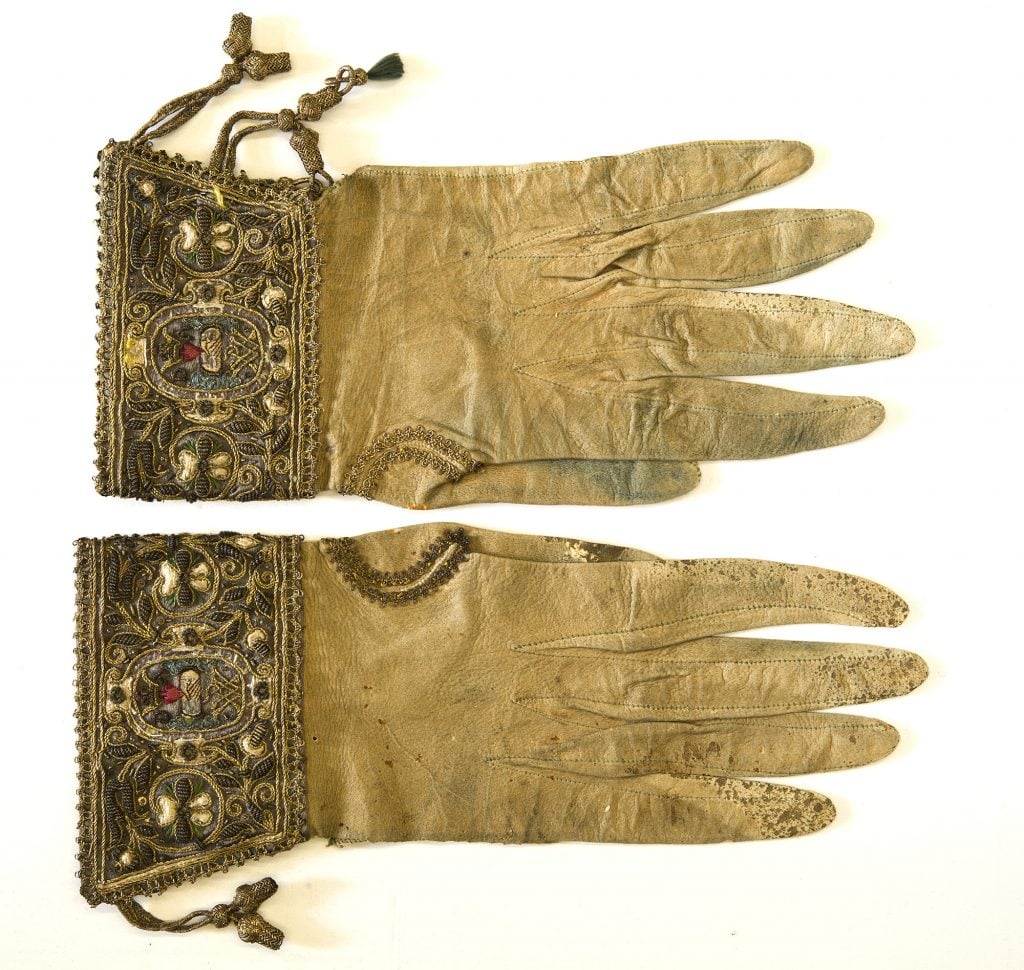
Late 16th–early 17th-century gloves. Bargello National Museum, Florence © Museo Nazionale del Bargello, Firenze.
Visitors can also smell the black, amber necklace worn by the woman depicted in his 1489 painting Lady with an Ermine, which gives off a sweet, earthy odor.
Other objects on view further draw out the world of Renaissance smells: recipe books highlight the art of 15th-century perfumery; the period’s fashions show an ostentation to match their wearers’ applied fragrances; while portraits by the hands of Giovanni Pietro Rizzoli and Giovanni Antonio Boltraffio add to the picture of Renaissance sumptuousness.
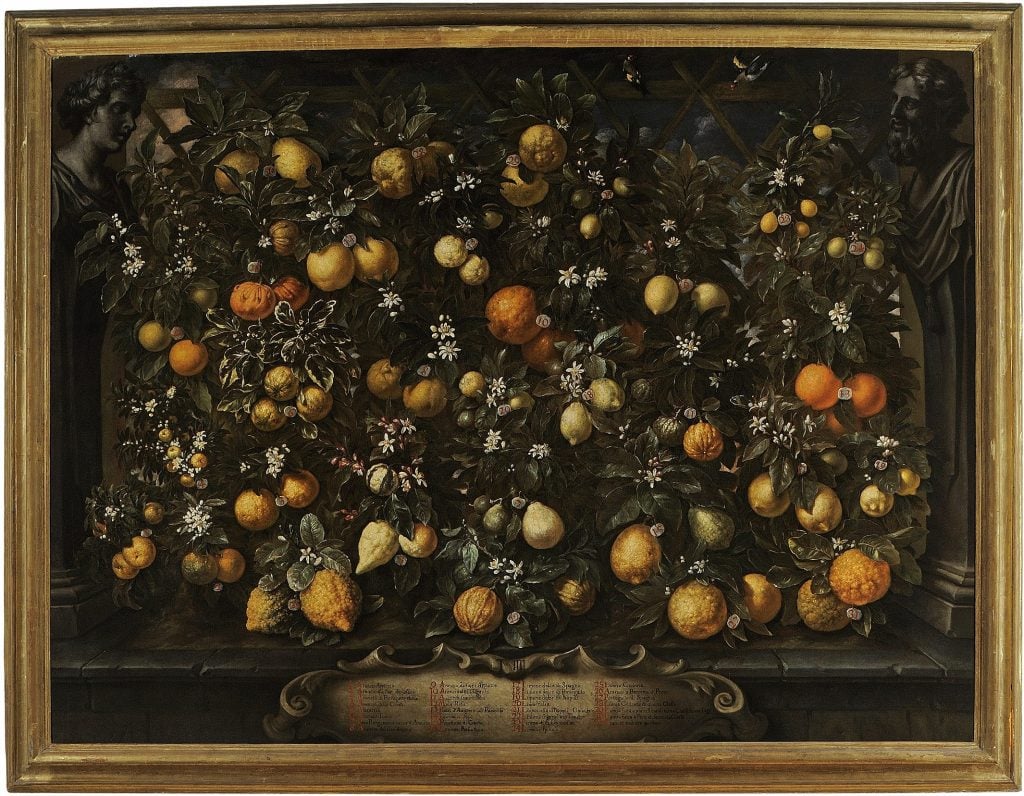
Bartolommeo Bimbi, Arance, lime, limoni e lumie (1715). The Medici Villa of Poggio a Caiano, Museum of Still Life © Gabinetto
fotografico Gallerie degli Uffizi, Firenze.
Leonardo’s interest in perfumes could have been inspired by his mother Caterina, a mysterious woman who may have been an emancipated person taken to Italy from her home in the Caucasus by way of Constantinople. (This is still unknown after years of inconclusive research.)
Carlo Vecce, a professor of Italian literature at the University of Naples and one of the exhibition’s lead curators, documented her westward journey in his research.
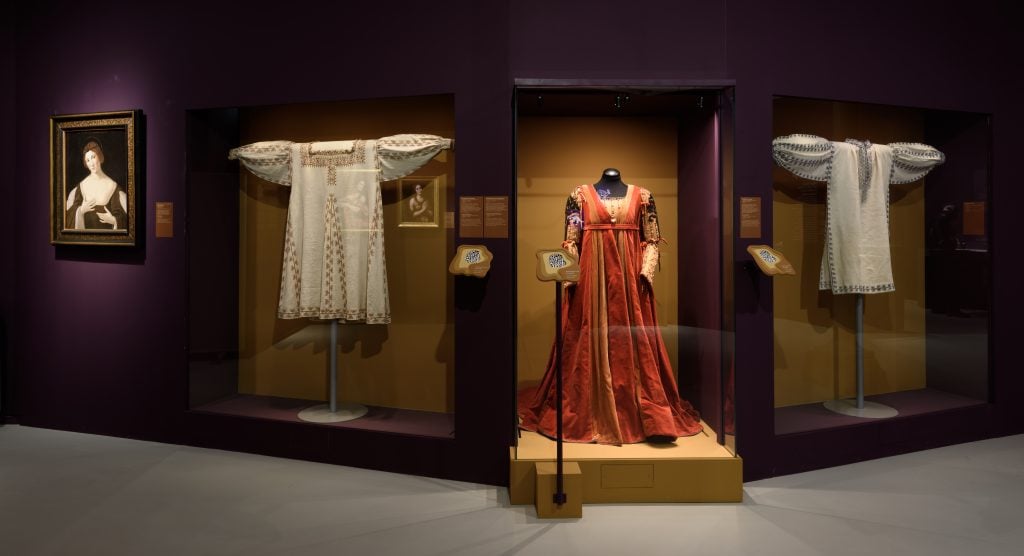
Installation view of “Leonardo da Vinci and the Perfumes of the Renaissance.” © Château du Clos Lucé – Parc Leonardo da Vinci. Photo: Leonard de Serres.
The exhibition takes visitors through themed rooms that highlight the diverse perfume cultures Leonardo’s mother would have encountered on the way to Italy. These span from the markets of Constantinople, where perfumes were used for purposes as diverse as healing, dieting, and religious worship, to the shops of the Spezieri, an order of medicine and spice merchants concentrated in Venice.
In both places, Caterina would have encountered scents made from spices like pepper, myrrh, hyssop, and cinnamon.
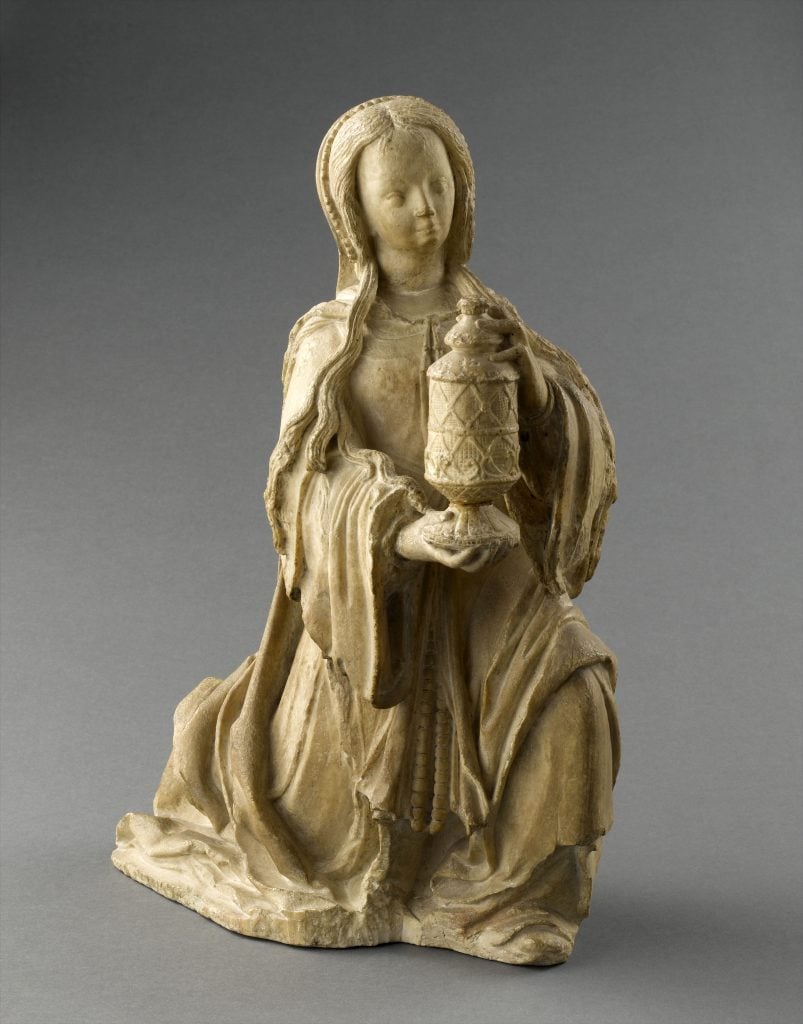
Saint Mary Magdalene kneeling, Musée de Cluny, Paris © GrandPalaisRmn (musée de Cluny – musée national du Moyen-Âge) / image GrandPalaisRmn
Caterina would have come to Italy by way of a well-established trading route between the Byzantine Empire and the Italian city-states. Her arrival coincided with the coming of perfumes, which were used in Asia long before they became widely available in Europe.
While it may seem that a scent-making enterprise is completely disconnected from Leonardo’s work as a painter, there may be one thread that connects them. While we do not know if Leonardo actually wore any of the perfumes he made, we do know that one of his disciples was known to prefer a mixture of egg yolk, linseed, and rosemary oil, which he and his master created with the same techniques they used to mix paints.
“Leonardo da Vinci and the Perfumes of the Renaissance” is on view at the Château du Clos Lucé, 2, rue du Clos Lucé 37400, Amboise, Val de Loire, France, June 7–September 15, 2024.





